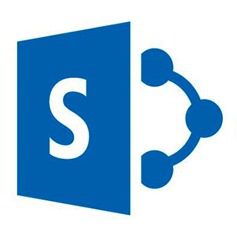SharePoint at a Crossroads
I recently participated in a panel discussion and BriefingsDirect.com podcast on the topic of SharePoint’s current opportunities and challenges, pontificating with good friends and fellow SharePoint experts Laura Rogers (@wonderlaura) and Joel Oleson (@joeloleson), with Harmon.ie CEO Yaacov Cohen adding his thoughts, and hosted by analyst Dana Gardner. The discussion focused on how enterprise collaboration as a whole, and SharePoint specifically, is being transformed by new cloud and mobile trends – and a maturing end user base. You can find a transcript of the entire discussion here, or listen to the podcast here.
 In my mind, there were a couple standout comments on my part: first, that SharePoint is the underlying technology (the core services) underneath the next stage of Microsoft’s collaboration, and second, perceptions of what you can do with SharePoint Online (via Office 365) out of the box need to be tempered with the realities of what workloads can be moved to (and managed within) the cloud. I do believe that it is an exciting time to be working with SharePoint and Office365 given the innovation coming our way, but as always companies need to think about their business requirements first, and the ROI that can be delivered by what is known today, and not chase after the promises of vaporware.
In my mind, there were a couple standout comments on my part: first, that SharePoint is the underlying technology (the core services) underneath the next stage of Microsoft’s collaboration, and second, perceptions of what you can do with SharePoint Online (via Office 365) out of the box need to be tempered with the realities of what workloads can be moved to (and managed within) the cloud. I do believe that it is an exciting time to be working with SharePoint and Office365 given the innovation coming our way, but as always companies need to think about their business requirements first, and the ROI that can be delivered by what is known today, and not chase after the promises of vaporware.
Gardner: Christian, it seems that the opportunity for Microsoft here is to make SharePoint the entry point, the face, if you will, of both hybrid cloud activities and mobile collaboration activities. It's a tremendous opportunity for them. How do you feel about the perception of people in the field, those users and those managers at enterprises? Are they seeing SharePoint as the potential silver bullet for managing this complexity, or do they see it more as a steppingstone to something else?
Buckley: There are a couple of things. We're talking about perceptions, right? There's some talk within the expert community about SharePoint as the brand. When I talk about going out to my SharePoint system, you're hearing the word “SharePoint” less and less. It doesn’t mean that the technology is going away — it's more that it's becoming ubiquitous.
When you think about the various Microsoft properties that they’re building on top of it — OneDrive, Yammer, and within Office 365, a lot of those various components, where there is content and where there is a process or workflow and other things that are related. When you're talking about some of the PowerBI, the dashboarding capability, you're talking about SharePoint. That’s where the data is stored behind that. It's the unifying technology underneath the platform.
Backing up a bit, the perception is about the control, administration, compliance, auditing, and all those options. The perception is that that you have less of an ability to do those things out in the cloud. Government bodies, highly regulated industries, went to SharePoint and on-prem because they had that level of control and the ability to go in and configure and customize and add-on and extended all those things. SharePoint grew so rapidly, because of that ability, but they are very correct in some of those perceptions about not having the same degree of control out in the cloud.
There is not yet parity when you think of it in those terms. The tools need to mature. The application programming interfaces (APIs) need to be expanded. On the flipside, those perceptions of what you can and can't do and control out in the cloud is because many organizations have overbuilt SharePoint. End-user adoption is a serious issue, as it is for every enterprise collaboration solution out there. Any competitor in the space that tells you otherwise is marketing to you.
The reality is that end users want something that is streamlined and that’s simple. They want to click once, twice at the most, get in, and get their jobs done. They don’t care what the brand is. Microsoft needs to extend and add, increase the parity between Office 365, the software-as-a-service (SaaS) solution, the SharePoint Online, version of the on-prem version, get that parity across it. Microsoft still has some messaging to improve on to help change some of those perceptions of what SharePoint is, where it's going, and how people can make that transition. They need to make it easy to access, easy to invite people in, easy to click once or twice, get to the information that you need through the interface that you’re most comfortable with, whether it's Exchange or Yammer or OneDrive or going into SharePoint, going into your intranet or an extranet, with all of those things. SharePoint underlies all of those things.
That’s right – once again I’m on the soapbox about Microsoft’s messaging. Looks like it’s a central theme on this blog. More coming soon.




